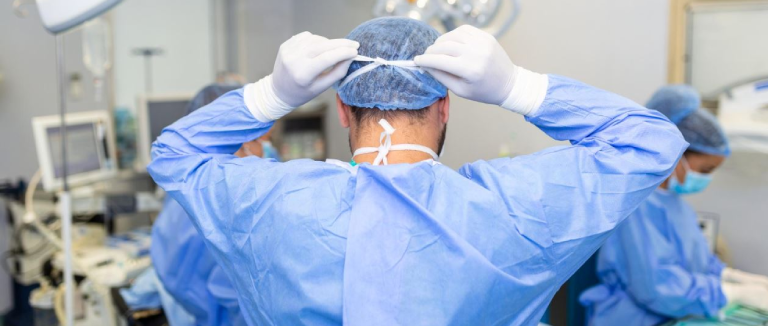In recent years, significant advancements have been made in the field of health due to developing technology. These developments have also brought innovations in the diagnosis and treatment of urological diseases. Liv Hospital Urology Specialist Assoc. Prof. Dr. Eymen Gazel emphasizes that with new technologies and the most up-to-date methods, diagnoses are now being made more accurately. Providing information about prostate cancer, Dr. Gazel highlights that prostate biopsy is the most reliable method for diagnosing prostate cancer. The latest innovation in prostate biopsy is that the biopsy procedure is conducted not through the rectum (anus) but through the perineal area, that is, the skin surface.

What is Prostate Cancer?
Prostate cancer is one of the most common types of cancer among men. However, when detected early, it can be treated appropriately. In order to treat prostate cancer, the factors contributing to the development of the disease should be addressed by answering the question, 'What causes prostate cancer?' Prostate cancer occurs as a result of the uncontrolled growth of cells in the prostate gland. The prostate gland is an organ about the size of a walnut located below the bladder in men, and it produces seminal fluid that helps nourish sperm.
What are the Risk Factors for Prostate Cancer?

The exact cause of prostate cancer is not known. However, there are several suspected risk factors, including:
- Age: Becomes more common with age. Men over the age of 65 have a higher risk of prostate cancer compared to men under the age of 50.
- Family history: Men with a family history of prostate cancer have a higher risk of developing prostate cancer.
- Ethnicity: African American men have a higher risk of prostate cancer compared to men of other races.
- Genetic mutations: Some genetic mutations can increase the risk of prostate cancer.
Symptoms of Prostate Cancer
Symptoms of prostate cancer can vary from person to person and may sometimes not be apparent. However, some symptoms can be clearly observed during the diagnostic stage of the disease:
- Urinary Problems: Since the prostate is located just below the urinary tract, when it enlarges, it can cause urination problems. Symptoms may include frequent urination, especially at night, difficulty urinating, straining to urinate, and a weak or interrupted urine flow.
- Blood in Urine or Semen: Because the disease can affect the urinary tract or seminal vesicles, blood may appear in urine or semen.
- Erectile Dysfunction: In some men, prostate cancer can cause erectile dysfunction (difficulty in achieving or maintaining an erection).
- Back or Hip Pain: As prostate cancer progresses, it may spread to the bones, resulting in back or hip pain.
Prostate symptoms often do not appear in the early stages of the disease; therefore, regular medical check-ups and screenings are important.
Diagnosis of Prostate Cancer

The diagnosis of prostate cancer is established using a combination of several tests..
- Prostate-specific antigen (PSA) test: PSA is a protein produced by the prostate gland. Men with elevated PSA levels have a higher risk of prostate cancer.
- Digital rectal examination (DRE): During a DRE, the doctor examines the prostate gland manually using a finger.
- Prostate biopsy: Prostate biopsy involves obtaining tissue samples from suspicious areas of the prostate gland. This procedure is the most reliable method for diagnosing prostate cancer. Additional tests may be necessary to determine the stage of cancer in patients diagnosed with prostate cancer.
Latest Innovation in Prostate Biopsy: Skin Surface Biopsy
In addition to established screenings such as PSA tests, which are assessed through blood analysis, advanced imaging methods like three-tesla prostate magnetic resonance imaging (MRI) are used to improve accuracy and early detection of prostate cancer. While these screening tests provide a risk ratio for cancer, the definitive diagnosis is made through pathological examination, aided by a biopsy.
Sampling from Suspicious Lesions
The prostate is a gland found in men, often likened to the size and shape of an orange. In MRI images taken with suspicion of prostate cancer, cancerous foci, sometimes smaller than 1 cm, can be observed in one or more areas of this gland. Making an accurate diagnosis for the patient involves taking samples (biopsies) from these small lesions.
In order to capture these small suspicious areas, the MR-ultrasound (USG) fusion method is now used in prostate biopsies. In this method, previously taken multiparametric MRI images of the patient are transferred to the ultrasound (USG) device used for biopsy, allowing the precise localization of the tumor. Thus, instead of blindly taking samples as in traditional biopsies, biopsies are performed directly from the suspicious focus with a guided approach. This way, patients receive an earlier and more accurate diagnosis.
Next-Generation MR-Ultrasound Fusion Biopsy

The latest innovation in prostate biopsy involves performing the biopsy procedure not through the rectum (anus) but through the perineal area, i.e., the skin surface. The distinctive features and advantages of this system are:
- Targeting the suspicious lesion by combining MR and ultrasound images.
- Reduced risk of infection since the procedure is performed through the perineal (skin) area rather than through the rectum (anus).
- The patient's biopsy map is recorded in the computer system. Thus, if cancer is detected in the sampled tissue, the exact coordinates of the lesion are known, enabling non-surgical (focal) treatments.
- Due to the reduced risk of infection and rectal bleeding, perineal (skin surface) biopsies are considered much more comfortable and safer for patients.
Prostate Cancer Treatment
Prostate cancer treatment is personalized, considering the patient's overall health, the extent of tumor spread, and other relevant factors. The treatment plan typically includes the following options:
- Watchful Waiting (Active Surveillance): In some cases, prostate cancer grows slowly and may not cause problems for the patient for an extended period. During this time, the doctor can closely monitor the patient's condition through regular check-ups and tests.
- Surgery: Surgery is a common treatment option for prostate cancer. The main surgical procedure, called a radical prostatectomy, involves removing part or all of the prostate gland to eliminate or correct the cancer.
- Radiation Therapy: Radiation therapy uses high-energy rays to destroy tumor cells or inhibit their growth.
- Hormone Therapy: Prostate cancer often responds to hormones. Hormone therapy works by blocking the production of hormones or their effects, helping to control the growth of the tumor.
- Chemotherapy: Chemotherapy uses medications to kill prostate cancer cells or slow their growth. It is most commonly used for advanced-stage prostate cancer.
- Immunotherapy:Immunotherapy is used to strengthen the immune system or enhance its response against prostate cancer cells. Targeted therapies use drugs that focus on specific genetic or molecular characteristics of prostate cancer cells.
These treatments aim to directly target cancer cells. Prostate medication is a pharmaceutical treatment method used to treat prostate diseases and typically alleviate symptoms.
Frequently Asked Questions About Prostate Cancer
People often have questions about prostate cancer symptoms, risk factors, early detection, and treatment options. Patients and their families also look for advice on prevention and want to understand what to expect regarding quality of life after treatment.
Does Prostate Cancer Kill?
Prostate cancer can be life-threatening if not treated. However, early diagnosis and effective treatment greatly reduce the risk of death.
Does Prostate Cancer Spread to Other Organs?
Prostate cancer can spread to other parts of the body (metastasize). Places where prostate cancer can spread include bones, liver, lungs, and brain.
Is There a Definite Cure for Prostate Cancer?
Treatment can control or eliminate prostate cancer and help extend life. The choice of treatment depends on the cancer's stage, the patient's overall health, and their individual preferences.
* Liv Hospital Editorial Board has contributed to the publication of this content .
* Contents of this page is for informational purposes only. Please consult your doctor for diagnosis and treatment. The content of this page does not include information on medicinal health care at Liv Hospital .
